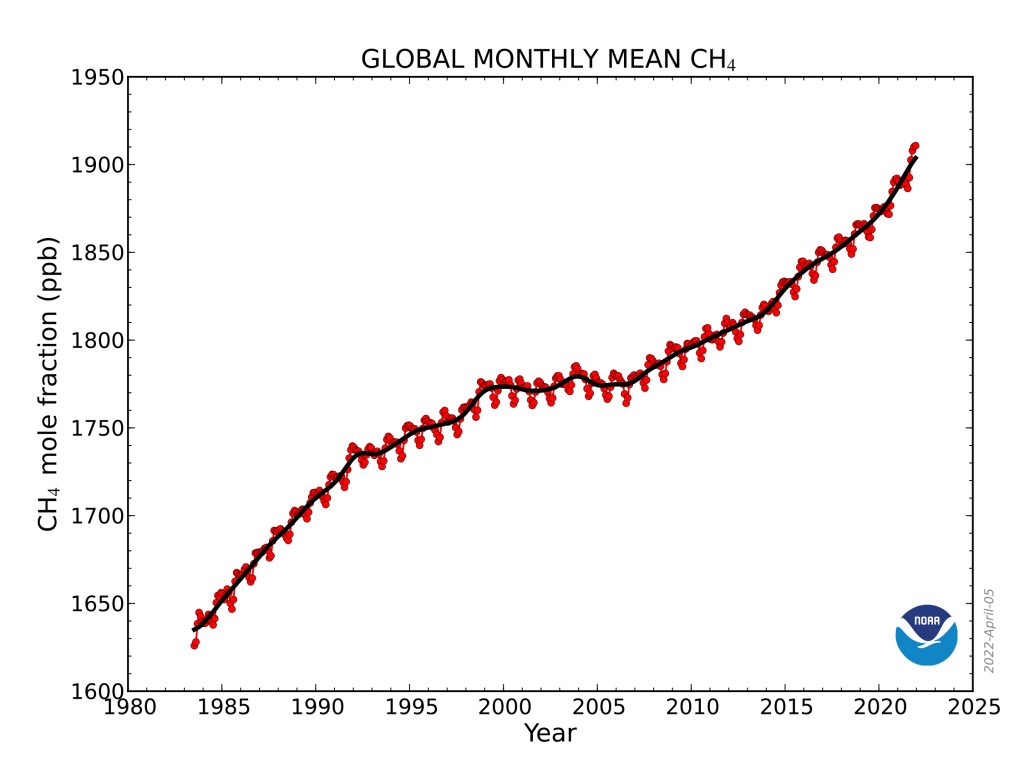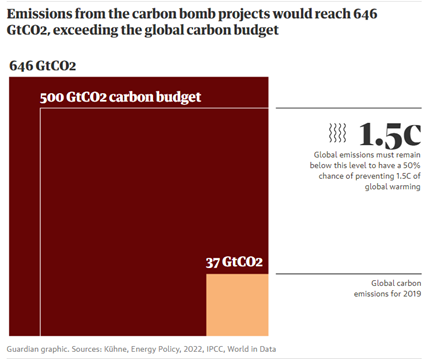
Additions to the power supply through the market can’t uproot the entrenched incumbent fossil fuel energy matrix and CO2 emissions are accelerating.
On the way to COP27 – fossil fuels and cognitive dissonance
It has been 30 years since the United Nations Framework Convention on Climate Change (UNFCCC) treaty was signed by 154 countries in June, 1992, in Rio de Janeiro to tackle the issue of climate change. This treaty, currently with 198 countries as signatories, is the parent treaty to the Kyoto Protocol and the Paris Agreement. As we approach the 27th Conference Of the Parties (COP27) of the UNFCCC, let’s start by taking stock of the situation around fossil fuels, the elephant in the room in the climate change policy discussions.
Clear message
The reality is that greenhouse gas emissions are escalating. Data from the US National Atmospheric and Oceanic Administration (NOAA) shows that CO2 is not only still steadily increasing, it is accelerating! In April 2020, 421 ppm CO2 were measured at the Mauna Loa Observatory, 50% more CO2 in the atmosphere than the 280 ppm taken as pre-industrial era baseline. It is 55% higher than the average in the 10000 years preceding the industrial era, in other words, than at any other time in human history. Methane emissions are also accelerating: the annual increase in methane during 2021 was 17 parts per billion (ppb), the record since systematic measurements began in 1983. Atmospheric methane averages about 2.6 times the pre-industrial level. All the consequences from a superheated atmosphere, land and ocean (hurricanes, floods, drought, melting etc) are steaming forward full speed ahead. Despite the many energy transition efforts, the message is clear: until the emissions decline, we know that we have not done enough.
How can that be?
So much effort has been invested in developing and marketing wind and solar over the past couple of decades! The results of the past decades of technology and market development are visible: wind and solar are now the most inexpensive power sources. The share of global renewable electricity increased from 20% to 28% from 2011 to 2021. The global renewable power capacity that is annually added is steadily increasing: the share of renewables reached a record 84% of net power additions in 2021, an increase of 17% compared to the year before to reach a new high of 314 GW of annual new installed renewable power. But in final energy consumption, the share of modern renewables (including hydropower, biofuels, biomass, geothermal, tidal & wave, wind and solar power) increased from 9% to 13% between 2009 and 2019, while the share of fossil fuel energy remains the same at about 80%.
Not there yet
Experience in managing large renewable systems on the grid, and confidence for the future, has been gained. Emissions have certainly been avoided. According to the net-zero scenarios of IRENA and the IEA, the global electricity supply needs to be about 61-65% renewable in 2030. To reach this goal, ~800 GW of renewable power capacity needs to be added annually. Since the average capacity additions over the last 3 years have been ~275 GW, annual renewable power capacity additions need to triple to be in line with these roadmaps. The failure to even slow the increasing levels of atmospheric CO2 and CH4 let us know we have not yet done enough. Additions to the power supply through the market can’t uproot the entrenched incumbent fossil fuel energy matrix.
Aim for the target
Only when the incumbent fossil fuel corporations are made to step out of the business of fossil fuels, will we start to transition to a new energy era. Combustion of fossil fuels is the single most important contributor to greenhouse gas emissions. It is truly remarkable the degree to which this topic has been avoided at the UNFCCC COP conferences. Last year at COP26, the words “fossil fuels” and “coal” appeared in negotiation text, for the very first time, to reduce fossil fuel subsidies and phase coal down (instead of out). The thirty year-long avoidance of stating the obvious need to phase out fossil fuel production is remarkable and shows the narrow frame constraining the discourse.
This systematic omission of fossil fuels from the wording was, however, the trigger for activists to launch the Fossil Fuel Non-Proliferation Treaty (FFT) which was recognized by the United Nations in September 2022 and signed by the European Parliament in October, 2022. In order to provide transparency on fossil fuel production, the initiators of this treaty called for a Global Registry of Fossil Fuels, which has been developed by Carbon Tracker and launched on 20 September 2022. Although it should have happened a long time ago, the importance of now stating and getting agreement on phasing out the biggest contributor to climate change, with the ability to monitor, should not be minimized.
A playbook of deny, doubt, delay and now…ingratiation
The public discussion and action around fossil fuels has stalled for so long thanks to fossil fuel companies’ public relations efforts and political manipulation. A new documentary, The Power of Big Oil, by the US public broadcasting system’s ‘Frontline’ looks back at the past thirty years in its 3-part series: ‘Deny’, ’Doubt’ and ‘Delay’. It shows that the industry paid for the creation of fake grassroots organizations (also often referred to as ‘astroturfing’), phony think-tanks, and aggressive disguised public relations to sway the public, influence politicians and manipulate any legislative efforts that would begin to address climate change. Their successes have become a playbook on how to surreptitiously paralyze political action in the US, for those with enough money. The current strategy is to ingratiate themselves with the public, positioning themselves as trusted partners through greenwashing campaigns which include ‘net-zero’ ambitions which don’t align with Paris climate goals. At COP26, the ingratiation apparently worked: 500 fossil fuel lobbyists permeated COP26 talks last year, to the dismay of climate victims.
Cognitive dissonance and ‘carbon bombs’
While pressing hands and making green promises, the fossil fuel companies are working on aggressive campaigns to expand their businesses. Gambling that the world won’t be able to stop them, they are sinking huge investments into 195 new oil and gas projects. The additional emissions from these ‘carbon bombs’, estimated to be 18 years of global CO2 emissions, will blow us right past any 1.5 °C or 2 °C threshold. Furthermore, the industry is spending more than $100 million each day for the rest of the decade to exploit new oil and gas fields. All this while knowing that experts and institutions such as the IEA and the head of the UN have said investing in fossil fuels must be excluded if we are to stabilize our climate.
Against this dissonant backdrop, the new Executive Secretary of UN Climate Change, Simon Stiell, recently pointed out that the gap between aspiration and reality is even greater than the emissions gap. He is calling for COP27 to “clearly show the pivot to a new era in our process: one that focuses on implementation” and refers to aligning national commitments with the Paris Agreement, providing the necessary finance as well as urgent action in mitigation, adaptation, finance and loss and damage.
A look at the expectations for the COP27 will be the subject of the next blog.


